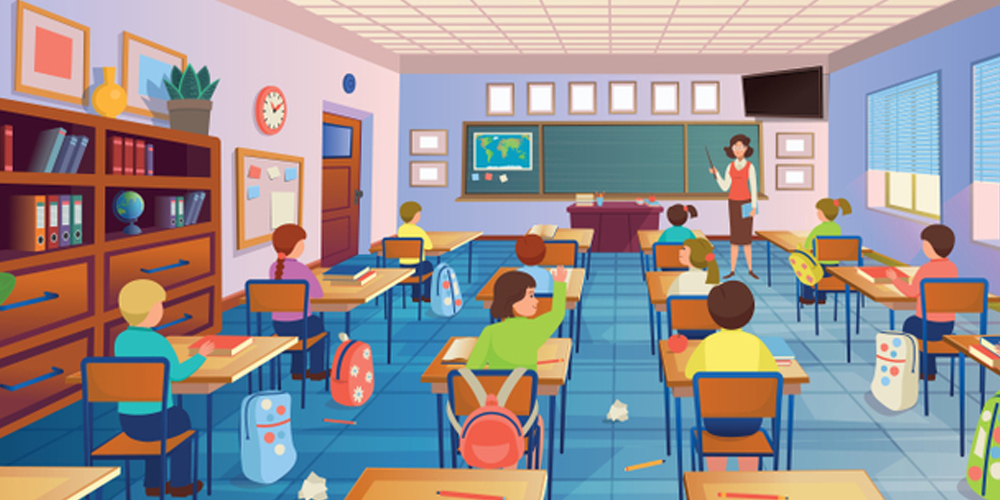Key Takeaways:
- The traditional educational landscape is evolving, with new online and hybrid models becoming prevalent.
- Personalized learning enhances student engagement and success by catering to individual needs.
- Technology integration in education offers both opportunities and challenges.
- Community and parental involvement are crucial in supporting student learning.
The Shift Towards Online and Hybrid Learning
The landscape of modern education is undergoing a transformational change, with a significant tilt towards online and hybrid learning models. Known for their flexibility, these models have become essential in addressing students’ varying needs in a continually changing world. By offering access to resources and instruction outside the conventional classroom walls, they empower students whose geographical or time constraints might have hindered them. For many, the ability to enroll in online schools near me is more than just an educational choice—it’s a vital opportunity to align their learning with personal circumstances and aspirations.
This transition not only breaks the barriers of physical classrooms but also fosters a global perspective among students. By engaging with diverse content and peers from different backgrounds, learners experience a more enriched educational journey. Digital transformation is about more than adding gadgets; it’s about creating flexible, personalized educational experiences that meet the demands of the modern learner.
Benefits of Personalized Learning
Central to the evolution in education is the shift towards personalized learning, which emphasizes tailoring educational experiences to meet each student’s needs, strengths, and interests. This approach moves away from the ‘one size fits all’ mentality, instead fostering an environment where students can engage deeply and meaningfully with material that resonates with them. Through platforms that adapt to learner needs, students receive assignments and feedback tailored to their learning trajectories, encouraging better outcomes and a lifelong passion for education.
Personalized learning empowers students to take control of their educational pathways by allowing them to explore at their own pace. This results in a more motivated and engaged learner. Technologies that support this form of learning enable educators to pinpoint specific learning hurdles and address them proactively, ensuring that every student has the opportunity to excel.
Integrating Technology in Classrooms
Integrating sophisticated technology into educational environments has paved the way for innovative teaching and learning methods. Virtual reality, gamification, and AI-powered tools redefine how students interact with educational content. These technologies do more than just capture attention—they enhance comprehension and retention by providing memorable, interactive experiences. However, educators must balance leveraging these high-tech tools with traditional teaching practices to develop critical thinking and interpersonal skills. Ensuring students gain a well-rounded education is essential for holistic development.
Integrating technology thoughtfully is essential to avoiding widening educational disparities. By creating equitable access to technology, all students have the potential to benefit from enhanced learning tools and environments.
The Role of Teachers in Modern Education
Teachers are at the forefront of educational evolution, guiding students to navigate new learning environments. As facilitators of knowledge, their role extends beyond traditional boundaries to include mentoring and coaching students in academic and personal development. With ongoing advancements in educational technology, teachers must continuously update their skills to remain effective in their roles. Professional development opportunities focusing on innovative teaching strategies and technology use are essential in this pursuit.
Investing in teacher training equips educators with the skills necessary to integrate new methodologies into their teaching. As a result, teachers can provide more personalized attention to students, helping to identify unique talents and address challenges early on. This focus on professional growth ultimately reflects in students’ performance and their readiness for future educational and professional pursuits.This doesn’t just apply to children learning, this also applies to further education leading into adult education for career progression. There are many industries that require teachers to teach. For instance, the healthcare sector always needs teachers, which is why a Teach The Teachers Course is so important in developing the skills required to reach the level they need for students to flourish within their learning environment.
In addition, teachers play a critical role in fostering an inclusive classroom environment that celebrates diversity and promotes equity in learning opportunities. By embracing differentiated instruction, they can cater to their students’ varied learning styles and needs, ensuring that every individual has the chance to thrive. Collaboration with peers, parents, and the Learning Environments community further enhances their ability to support student success, creating a well-rounded educational experience. Teachers also serve as role models, inspiring students to develop critical thinking, creativity, and a lifelong love for learning. As education continues to evolve, the adaptability and dedication of teachers remain essential to preparing students for the complexities of the modern world.
Community and Parental Engagement
A collaborative approach involving schools, families, and communities dramatically enhances students’ educational experience. When parents and community members engage actively with schools, they contribute to a supportive network that fosters student success. Activities such as volunteer programs, educational workshops, and family learning events create a cohesive educational ecosystem.
Parental involvement, in particular, has been linked to higher student achievement, better student attitudes, and reduced absenteeism. By establishing open communication channels between schools and families, educators ensure that parents are well informed and can offer valuable input into their child’s educational journey. This partnership boosts student morale and nurtures a positive learning environment.
Challenges in Adopting New Models
While the shift towards new educational models presents numerous benefits, it also brings challenges that educators and policymakers must navigate. The digital divide remains a significant hurdle, highlighting disparities in access to technology and internet connectivity. Bridging this gap ensures all students have equal opportunities to benefit from modern educational advancements.
Resistance to change is another obstacle, often stemming from the fear of the unknown or attachment to traditional methods. To ease transitions, it is crucial to involve educators, students, and parents in the change process, providing support and resources to adapt to new paradigms. Overcoming these challenges requires a unified effort and innovative thinking across all levels of the education system.As educational institutions evolve, integrating innovative strategies becomes crucial for success. Emphasizing personalized learning paths and adaptive technologies can significantly enhance student engagement and outcomes. For educators and administrators seeking to refine their approach to talent management and development, it is beneficial to explore expert insights and strategies. To gain a deeper understanding of these methodologies, you can view this to discover comprehensive consulting solutions tailored to educational needs.
Future Trends in Education
As we look to the future, educational trends such as gamification, artificial intelligence, and expanded remote learning promise to continue reshaping the academic landscape. These advancements open doors to more interactive and personalized learning experiences, challenging educators and students to think beyond traditional frameworks. Adaptation and innovation are vital to maintaining education’s relevance and efficacy in preparing students for the demands of the modern world.
Embracing these trends thoughtfully will ensure that education keeps pace with technological advancements and continues to provide a comprehensive foundation upon which students can build their futures. With a collaborative approach, the future of education holds promise for exciting new possibilities and greater accessibility for all learners.

